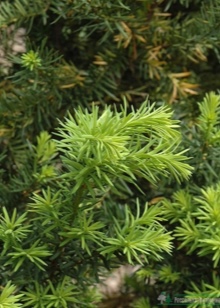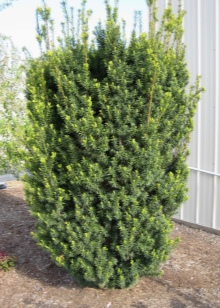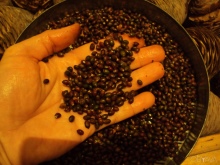Medium yew: description, planting and care rules

Owners of private households in most cases decorate their territory with evergreen shrub-type plants. These include medium yew. The tree belonging to hybrid varieties has gained immense popularity due to its original appearance.
Medium yew is distinguished by its unpretentiousness and high frost resistance.


Characteristic
Starting the description of this plant, it is important to note that it is a hybrid of berry and pointed yew. An amazing plant, which was bred by breeders from the United States at the beginning of the last century, has a number of features.
- The needles are colored in olive tone with a greenish tint. In direct sunlight, the needles become reddish.
- Shoots are directed upwards.
- The needles on the branches are arranged in two rows.
- The tree bears fruit annually. The fruits do not look like cones, but more like berries, the seed of which is hidden by a massive pericarp.
- Seed ripening occurs by the end of the summer period, the beginning of autumn.
- Medium yew tolerates shade well and does not require careful pruning. It is quite easy to give the desired shape to the crown of a tree.
Medium yew is known for its excellent drought tolerance. In addition, the plant tolerates low temperatures. Evergreen conifers grow well in central Russia, as well as in the southern regions.


Varieties
In modern horticulture, more than 30 varieties of medium yew are distinguished. The most common are the following.
- Hixie. Shrub type evergreen ephedra. During the year, it gains 15 cm in height. The height of an adult tree exceeds 3 meters. The root system is strong and massive. The Hiksi variety is distinguished by its emerald-colored needles. The needles are soft and flat. In young plants, the needles have a pale green color, which darkens over time. The crown shape is columnar. Elongated shoots are characterized by uneven growth. Over time, the branches of the tree tilt to the ground.
Note that this variety does not contain resinous substances, so the tree will not exude the specific aroma that is inherent in conifers. "Hixie" is in perfect harmony with juniper and thuja.



- Voytek. A unique plant with an unusual shape that is ideal for hedges. The compact evergreen pyramidal ephedra goes well with other garden plants. It has juicy dark green needles with a distinct central vein. This variety is very reliable and frost-resistant. Voytek prefers moist fertile soils and grows well in shady and semi-shady places.


- Farmen. Dense, dense yew shape. A compact shrub with emerald needles, it grows slowly (over 10 years, its height increases by 1-1.5 meters). Gardeners advise using this variety to create low-growing hedges.

- Hillie. A beautiful rectangular shrub reaches 2 meters in height in 10 years. The young tree has an oval crown, which becomes columnar with age. Like all of its relatives, "Hilly" is ideal for hedges in small garden areas. It lends itself well to pruning and tolerates low temperatures.


Features of planting and care
All varieties of medium yew are a fairly unpretentious coniferous crop. However, certain planting conditions for this plant still exist. So, experts advise you to pay attention to the following recommendations.
- Ephedra prefers medium loamy soil. A mixture of garden loam and humus is suitable. It is also advisable to add wood ash to it.
- Yew is planted in late summer, until October. The plant prefers open spaces. However, the young tree should be protected from gusty winds.
- The planting hole should not be less than 50 cm, and its width would allow the root system of the seedling with an earthen clod to be freely accommodated. It is he who will help protect the delicate root system of the ephedra from damage.
- A hedge requires a trench. The distance between seedlings should not be less than 1 meter. At the bottom of the trench, it is necessary to lay out a layer of drainage (broken brick, crushed stone, sand or small pebbles). Like all other conifers, the average yew reacts negatively to excess moisture. An important point: the root system of the ephedra should be at the same level with the soil surface.
- After planting the seedling, the soil is watered abundantly and sprinkled with a layer of mulch.
Peat or compost is perfect for these purposes.


It is not difficult to grow a medium yew in a garden plot. This plant needs regular watering and loosening of the soil. It is important to keep the tree trunk clean. Young conifers must be covered for the winter, protecting them from snow adhesion and sunburn with the arrival of spring. Preventive treatments against pests are no less important. Also, as the plant grows, regular pruning is required.
Medium yew is propagated by cuttings or seeds. There is also another way - by vaccination. However, it is only relevant for specialists. The beautiful coniferous shrub is widely used in the garden landscape.



All varieties of medium yew are suitable for creating hedges, as well as for landscaping parks within the city and summer cottages. In addition, the unpretentious ephedra, in combination with other ornamental plants, creates original single or group compositions.
For a video overview of the culture, see below.






























































The comment was sent successfully.